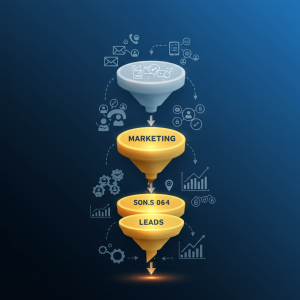Is PR Inbound or Outbound Marketing? Understanding the Nuances

Public relations sits at an interesting crossroads in the marketing world. As businesses increasingly segment their strategies into inbound and outbound approaches, PR professionals often find themselves asking: where exactly does public relations fit?
The Traditional View: PR as Outbound Marketing
Historically, public relations has been categorized as an outbound marketing tactic. This classification stems from PR’s traditional focus on pushing messages outward to audiences through media outlets, press releases, and public statements. Much like other outbound strategies, PR involves reaching out to journalists, publications, and influencers to secure coverage for a brand or organization.
When a company distributes a press release announcing a new product, or when a PR team pitches a story to journalists, they’re initiating the communication. These activities align with the fundamental nature of outbound marketing—proactively pushing messages out to potential customers rather than waiting for them to find you.
But as digital transformation has reshaped the marketing landscape, public relations has evolved in ways that blur these traditional boundaries.
The Modern Perspective: PR’s Inbound Elements
Today’s public relations strategies incorporate significant inbound marketing elements. When content created through PR efforts—such as thought leadership articles, interviews, or media mentions—appears online, it often serves as valuable content that attracts audiences organically. This content can:
- Improve search engine rankings through high-quality backlinks from reputable publications
- Build credibility and trust with audiences who discover the brand through respected third-party sources
- Generate long-term value as articles remain online indefinitely, continuing to draw new audiences
According to a study by Cision on the evolution of PR, earned media—a primary output of PR efforts—increasingly fuels content marketing strategies that are fundamentally inbound in nature. When a potential customer searches for information and discovers your brand through a media article, that journey resembles typical inbound marketing pathways.
PR as an Integrated Marketing Component
The most accurate way to view modern PR is neither purely as inbound nor outbound marketing, but as a hybrid approach that spans both methodologies. Effective public relations creates a feedback loop where outbound tactics generate earned media that subsequently functions as inbound content.
Consider these examples:
Outbound PR activities:
- Pitching stories to journalists
- Distributing press releases
- Conducting media outreach campaigns
- Organizing press conferences
Resulting inbound benefits:
- Media coverage that drives organic traffic
- Increased brand awareness leading to direct search traffic
- Earned backlinks that improve SEO performance
- Content that educates prospects at various stages of the buyer’s journey
At OutboundMarketo, we’ve found that the most successful marketing strategies integrate PR activities with both inbound and outbound approaches. This integration creates powerful synergies that maximize reach while building long-term authority in your market.
Strategic Implications for Marketers
Understanding PR’s dual nature has important implications for your marketing strategy:
First, measure PR success using both outbound and inbound metrics. Track immediate coverage and mention statistics, but also monitor the long-tail traffic, engagement, and conversion impacts of earned media.
Second, create PR content with SEO and discoverability in mind. Work with journalists to incorporate relevant keywords and topics that align with your inbound marketing strategy.
Third, repurpose earned media across your owned channels. Content Marketing Institute reports that repurposing PR-generated content can increase its effectiveness by up to 300% through extended reach and repeated exposure.
The Verdict: PR Transcends the Binary Classification
Rather than forcing public relations into either the inbound or outbound category, recognize its unique position as a bridge between these approaches. Modern PR initiates with outbound tactics but generates outcomes that power inbound marketing success.
This perspective allows marketers to leverage PR’s full potential—using proactive outreach to create awareness while simultaneously building a foundation of credible content that attracts and nurtures leads organically.
The next time someone asks whether PR is inbound or outbound marketing, the most accurate answer might be: “Yes, it’s both—and that’s precisely what makes it so valuable.”





